[Editor’s Note: In today’s post, Mad Scientist Laboratory explores how humankind’s recent exponential growth in interconnectivity will continue to affect warfare in the Future Operational Environment. Using several contemporary use cases, we identify a number of vulnerabilities that have already been exploited by our adversaries. The U.S. Army must learn how to sanitize its information signatures while simultaneously exploit those presented by our adversaries. As previously stated on this site by COL Stefan J. Banach (USA-Ret.), “Virtual Space is the decisive terrain and securing it is the decisive operation.“]
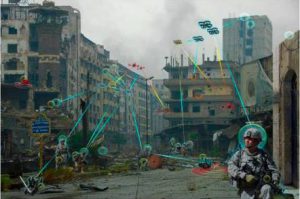
The timeless competition of finders vs. hiders is a key characteristic of the Future Operational Environment (FOE). Through the proliferation of sensors creating the Internet of Battlefield Things (IoBT), ubiquitous global communication, and pervasive personal electronic devices, the finders will be ascendant on the battlefield. They have more advantages and access than ever before – with the ability to make impactful non-kinetic action – and the hiders are creating bigger, enduring, and more conspicuous signatures. In the FOE, our ability to wade through the petabytes of raw sensor and communications data input to generate a Common Operating Picture and arrive at actionable courses of action will be significantly challenged. Will we be able to sanitize Blue Forces’ signatures to prevent our adversaries from detecting and exploiting similar information, while simultaneously seeing through Red Forces’ deception measures to strike decisively?
 A recent example highlighting the inherent and unpredictable vulnerabilities presented by these emerging technologies is the incident involving personal fitness devices that track users via GPS. Many military personnel have used these devices to track personal performance while conducting physical fitness training. The associated tracking information was transmitted back to fitness-tracking company Strava, where it was aggregated and then published as maps that were then made available to the public. Unfortunately, these maps contained articulate outlines of PT routes in and around military bases, the locations of which were not intended to be made public. This now publically available information inadvertently provided our adversaries with sensitive information that, in years past, would have required considerable time and other resources to acquire.
A recent example highlighting the inherent and unpredictable vulnerabilities presented by these emerging technologies is the incident involving personal fitness devices that track users via GPS. Many military personnel have used these devices to track personal performance while conducting physical fitness training. The associated tracking information was transmitted back to fitness-tracking company Strava, where it was aggregated and then published as maps that were then made available to the public. Unfortunately, these maps contained articulate outlines of PT routes in and around military bases, the locations of which were not intended to be made public. This now publically available information inadvertently provided our adversaries with sensitive information that, in years past, would have required considerable time and other resources to acquire.
In response, the DoD issued a memorandum through Deputy Defense Secretary Patrick Shanahan effectively banning the use of geolocation capabilities in operational areas. While there was swift policy resolution in this case, albeit after-the-fact, there are a number of continuing and emergent threats presented by the information age that still need to be addressed.
 In the previous example, the culprit was a smart watch or fitness tracking device that is a companion piece to the smart phone. Removing or prohibiting these devices is less detrimental to the overall morale, spirit, and will power of our Soldiers than removing their cell phones — their primary means of voice, data, and social media connectivity — oftentimes their sole link with their family back home. Adversaries have already employed tactics designed to exploit vulnerabilities arising from Soldier cellphone use. In the Ukraine, a popular Russian tactic is to send spoofed text messages to Ukrainian soldiers informing them that their support battalion has retreated, their bank account has been exhausted, or that they are simply surrounded and have been abandoned. Taking it one step further, they have even sent false messages to the families of soldiers informing them that their loved one was killed in action.
In the previous example, the culprit was a smart watch or fitness tracking device that is a companion piece to the smart phone. Removing or prohibiting these devices is less detrimental to the overall morale, spirit, and will power of our Soldiers than removing their cell phones — their primary means of voice, data, and social media connectivity — oftentimes their sole link with their family back home. Adversaries have already employed tactics designed to exploit vulnerabilities arising from Soldier cellphone use. In the Ukraine, a popular Russian tactic is to send spoofed text messages to Ukrainian soldiers informing them that their support battalion has retreated, their bank account has been exhausted, or that they are simply surrounded and have been abandoned. Taking it one step further, they have even sent false messages to the families of soldiers informing them that their loved one was killed in action.
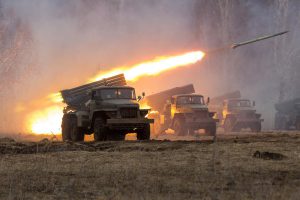
This sets off a chain of events where the family member will immediately call or text the soldier, followed by another spoofed message to the original phone. With a high number of messages to enough targets, an artillery strike is called in on the area where an excess of cellphone usage has been detected.
Similarly, a NATO red team was able to easily infiltrate their own forces through information gathered on social media sites – amassing locations, dates, and other data – to influence their Soldiers’ behavior. Facebook and Instagram allowed them to track Soldiers, determine exact locations of exercises, and identify all members of a certain unit.

Hamas employed a similar tactic against Israeli Defense Force soldiers, using fake accounts to pose as attractive women in honey trap operations to access sensitive operational information.
Each of these examples illustrate recent, low-cost, and effective means of deception. Device exploitation, the over-sharing of sensitive data, and the challenge in determining information credibility will only increase as connected devices continue to both proliferate and transition from being portable and wearable to embeddable and implantable. The following questions must be addressed by the U.S. Army:
– How can we sanitize ourselves to mitigate these and other vulnerabilities from adversely affecting us operationally on future battlefields?
– How do we ensure that the information we are receiving and processing is legitimate and that we are not being spoofed?
– How are we preparing to exploit similar vulnerabilities in our adversaries?

– Is this even possible in a hyper-connected and complex battlefield or are we destined to be on the wrong side of some future Operation Fortitude, where effective military deception helped ensure the success GEN Eisenhower’s Great Crusade to liberate Europe from the Nazis in World War II?
One final thought — geolocation information and high resolution remote sensing capabilities, which only a short decade and a half ago were limited to a handful of national intelligence services, have entered into a new, democratized era. As recently demonstrated in three warzone use cases, anyone (including non-spacefaring nations, non-state actors, and super-empowered individuals) can now access current and past imagery to generate high resolution, three dimensional views for geolocation, analysis, and (unfortunately) exploitation. The convergence of this capability with the proliferation of personalized information signatures truly means that there is “Nowhere to Run, Nowhere to Hide.” (Crank it up with Martha and the Vandellas!)
If you enjoyed this post, please also read the following blog posts addressing the weaponization of social media, the future of battlefield deception, and virtual warfare:
- Our review of proclaimed Mad Scientist P.W. Singer and co-author Emerson T. Brooking’s book LikeWar — The Weaponization of Social Media.
- Matthew Ader‘s posts on War Laid Bare and Decision in the 21st Century.
- COL(USA-Ret.) Stefan J. Banach‘s complementary posts on Virtual War – A Revolution in Human Affairs (Parts I and II).



 “The U.S. Army finds itself at a historical inflection point, where disparate, yet related elements of the Operational Environment (OE) are converging, creating a situation where fast-moving trends across the Diplomatic, Information, Military, and Economic (DIME) spheres are rapidly transforming the nature of all aspects of society and human life – including the character of warfare.” — The Operational Environment and the Changing Character of Future Warfare
“The U.S. Army finds itself at a historical inflection point, where disparate, yet related elements of the Operational Environment (OE) are converging, creating a situation where fast-moving trends across the Diplomatic, Information, Military, and Economic (DIME) spheres are rapidly transforming the nature of all aspects of society and human life – including the character of warfare.” — The Operational Environment and the Changing Character of Future Warfare 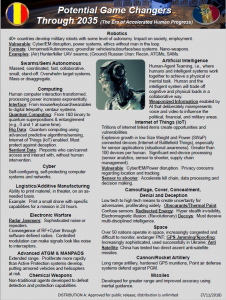 • Updated
• Updated •
• 
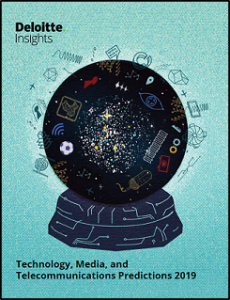 From Deloitte Insights Predictions we learned:
From Deloitte Insights Predictions we learned: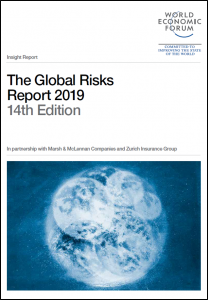 From the WEF Report we learned:
From the WEF Report we learned:
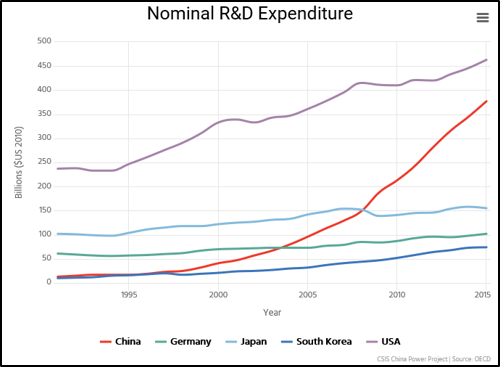

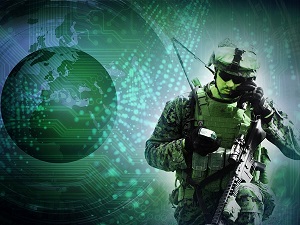 Success in the future OE relies on many key assumptions. One such assumption is that the innovation cycle has flipped. Where the DoD used to drive technological innovation in this country, we now see private industry (namely Silicon Valley) as the driving force with the Army consuming products and transitioning technology for military use. If this system is to work, as the assumption implies, the Army must be able to work easily with the country’s leading technology companies. Microsoft’s President Brad Smith stated recently that his company will “provide the U.S. military with access to the best technology … all the technology we create. Full stop.”
Success in the future OE relies on many key assumptions. One such assumption is that the innovation cycle has flipped. Where the DoD used to drive technological innovation in this country, we now see private industry (namely Silicon Valley) as the driving force with the Army consuming products and transitioning technology for military use. If this system is to work, as the assumption implies, the Army must be able to work easily with the country’s leading technology companies. Microsoft’s President Brad Smith stated recently that his company will “provide the U.S. military with access to the best technology … all the technology we create. Full stop.”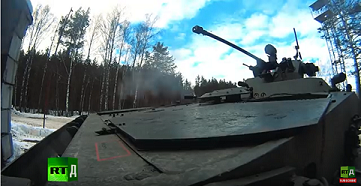
 The retail superpower Walmart is employing hundreds of robots in stores across the country, starting next month. These floor-scrubbing janitor robots will keep the stores’ floors immaculate using autonomous navigation that will be able to sense both people and obstacles.
The retail superpower Walmart is employing hundreds of robots in stores across the country, starting next month. These floor-scrubbing janitor robots will keep the stores’ floors immaculate using autonomous navigation that will be able to sense both people and obstacles.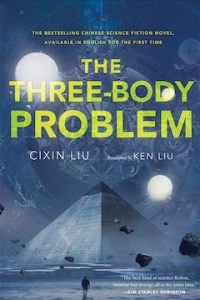 Russia, and Africa. This rise of global science fiction challenges how we think about the evolution of the genre. Historically, our occidental bias led us to believe that sci-fi was spreading from Western centers out to the rest of the world, blinding us to the fact that other regions also have rich histories of sci-fi depicting future possibilities from their cultural perspectives. Chinese science fiction has boomed in recent years, with standout books like Cixin Liu’s
Russia, and Africa. This rise of global science fiction challenges how we think about the evolution of the genre. Historically, our occidental bias led us to believe that sci-fi was spreading from Western centers out to the rest of the world, blinding us to the fact that other regions also have rich histories of sci-fi depicting future possibilities from their cultural perspectives. Chinese science fiction has boomed in recent years, with standout books like Cixin Liu’s  A significant barrier to the modeling and simulation of dense urban environments has been the complexity of these areas in terms of building, vehicle, pedestrian, and foliage density.
A significant barrier to the modeling and simulation of dense urban environments has been the complexity of these areas in terms of building, vehicle, pedestrian, and foliage density.
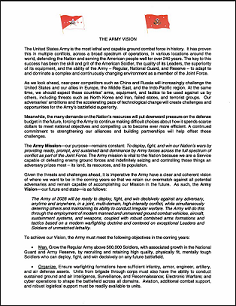 “The Army of 2028 will be ready to deploy, fight, and win decisively against any adversary, anytime and anywhere, in a joint, multi-domain, high-intensity conflict, while simultaneously deterring others and maintaining its ability to conduct irregular warfare. The Army will do this through the employment of modern manned and unmanned ground combat vehicles, aircraft, sustainment systems, and weapons, coupled with robust combined arms formations and tactics based on a modern warfighting doctrine and centered on exceptional Leaders and Soldiers of unmatched lethality.” GEN Mark A. Milley, Chief of Staff of the Army, and Dr. Mark T. Esper, Secretary of the Army, June 7, 2018.
“The Army of 2028 will be ready to deploy, fight, and win decisively against any adversary, anytime and anywhere, in a joint, multi-domain, high-intensity conflict, while simultaneously deterring others and maintaining its ability to conduct irregular warfare. The Army will do this through the employment of modern manned and unmanned ground combat vehicles, aircraft, sustainment systems, and weapons, coupled with robust combined arms formations and tactics based on a modern warfighting doctrine and centered on exceptional Leaders and Soldiers of unmatched lethality.” GEN Mark A. Milley, Chief of Staff of the Army, and Dr. Mark T. Esper, Secretary of the Army, June 7, 2018. In order to achieve this vision, the Army of 2028 needs a TRADOC 2028 that will recruit, organize, and train future Soldiers and Leaders to deploy, fight, and win decisively on any future battlefield. This TRADOC 2028 must account for: 1) the generational differences in learning styles; 2) emerging learning support technologies; and 3) how the Army will need to train and learn to maintain cognitive overmatch on the future battlefield. The Future Operational Environment, characterized by the speeding up of warfare and learning, will challenge the artificial boundaries between institutional and organizational learning and training (e.g., Brigade mobile training teams [MTTs] as a Standard Operating Procedure [SOP]).
In order to achieve this vision, the Army of 2028 needs a TRADOC 2028 that will recruit, organize, and train future Soldiers and Leaders to deploy, fight, and win decisively on any future battlefield. This TRADOC 2028 must account for: 1) the generational differences in learning styles; 2) emerging learning support technologies; and 3) how the Army will need to train and learn to maintain cognitive overmatch on the future battlefield. The Future Operational Environment, characterized by the speeding up of warfare and learning, will challenge the artificial boundaries between institutional and organizational learning and training (e.g., Brigade mobile training teams [MTTs] as a Standard Operating Procedure [SOP]). Soldiers will be “New Humans” – beyond digital natives, they will embrace embedded and integrated sensors, Artificial Intelligence (AI), mixed reality, and ubiquitous communications. “Old Humans” adapted their learning style to accommodate new technologies (e.g., Classroom XXI). New Humans’ learning style will be a result of these technologies, as they will have been born into a world where they code, hack, rely on intelligent tutors and expert avatars (think the nextgen of Alexa / Siri), and learn increasingly via immersive
Soldiers will be “New Humans” – beyond digital natives, they will embrace embedded and integrated sensors, Artificial Intelligence (AI), mixed reality, and ubiquitous communications. “Old Humans” adapted their learning style to accommodate new technologies (e.g., Classroom XXI). New Humans’ learning style will be a result of these technologies, as they will have been born into a world where they code, hack, rely on intelligent tutors and expert avatars (think the nextgen of Alexa / Siri), and learn increasingly via immersive  Delivering training for new, as of yet undefined MOSs and skillsets. The Army will have to compete with Industry to recruit the requisite talent for Army 2028. These recruits may enter service with fundamental technical skills and knowledges (e.g., drone creator/maintainer, 3-D printing specialist, digital and cyber fortification construction engineer) that may result in a flattening of the initial learning curve and facilitate more time for training “Green” tradecraft. Cyber recruiting will remain critical, as TRADOC will face an increasingly difficult recruiting environment as the Army competes to recruit new skillsets, from training deep learning tools to robotic repair. Initiatives to appeal to gamers (e.g., the Army’s
Delivering training for new, as of yet undefined MOSs and skillsets. The Army will have to compete with Industry to recruit the requisite talent for Army 2028. These recruits may enter service with fundamental technical skills and knowledges (e.g., drone creator/maintainer, 3-D printing specialist, digital and cyber fortification construction engineer) that may result in a flattening of the initial learning curve and facilitate more time for training “Green” tradecraft. Cyber recruiting will remain critical, as TRADOC will face an increasingly difficult recruiting environment as the Army competes to recruit new skillsets, from training deep learning tools to robotic repair. Initiatives to appeal to gamers (e.g., the Army’s  “TRADOC in your ruck.”
“TRADOC in your ruck.”  Learning in the future will be personalized and individualized with targeted learning at the point of need. Training must be customizable, temporally optimized in a style that matches the individual learners, versus a one size fits all approach. These learning environments will need to bring gaming and micro simulations to individual learners for them to experiment. Similar tools could improve tactical war-gaming and support Commander’s decision making. This will disrupt the traditional career maps that have defined success in the current generation of Army Leaders. In the future, courses will be much less defined by the rank/grade of the Soldiers attending them.
Learning in the future will be personalized and individualized with targeted learning at the point of need. Training must be customizable, temporally optimized in a style that matches the individual learners, versus a one size fits all approach. These learning environments will need to bring gaming and micro simulations to individual learners for them to experiment. Similar tools could improve tactical war-gaming and support Commander’s decision making. This will disrupt the traditional career maps that have defined success in the current generation of Army Leaders. In the future, courses will be much less defined by the rank/grade of the Soldiers attending them. Geolocation of Training will lose importance. We must stop building and start connecting. Emerging technologies – many accounted for in the
Geolocation of Training will lose importance. We must stop building and start connecting. Emerging technologies – many accounted for in the
 Russia’s move to adopt a national cryptocurrency, the cryptoruble, as a means of asserting its digital sovereignty and ensuring national security. The advent of the cryptoruble will have geopolitical ramifications far beyond Mother Russia’s borders, potentially ushering in an era of economic hegemony over those states that embrace this supranational cryptocurrency. (Note: Some of the embedded links in this post are best accessed using non-DoD networks.)]
Russia’s move to adopt a national cryptocurrency, the cryptoruble, as a means of asserting its digital sovereignty and ensuring national security. The advent of the cryptoruble will have geopolitical ramifications far beyond Mother Russia’s borders, potentially ushering in an era of economic hegemony over those states that embrace this supranational cryptocurrency. (Note: Some of the embedded links in this post are best accessed using non-DoD networks.)]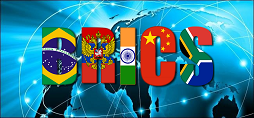 nations [Brazil, Russia, India, China, South Africa], which would continue to work in the event the global Internet malfunctions.”
nations [Brazil, Russia, India, China, South Africa], which would continue to work in the event the global Internet malfunctions.”  While an Internet alternative (or
While an Internet alternative (or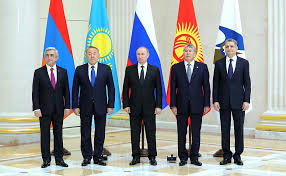 for the ‘Digital Economy,’ including plans to develop [it in] the EAEU.”
for the ‘Digital Economy,’ including plans to develop [it in] the EAEU.” The cryptoruble could be used to affect geopolitical relationships. In addition to wielding untraceable resources, Russia could also leverage this technology to join forces with some countries against others. According to the plan President Putin laid out upon announcing the launch of a cryptoruble, Russia would form a “single payment space” for the member states of the EAEU, based on “the use of new financial technologies, including the technology of distributed registries.”
The cryptoruble could be used to affect geopolitical relationships. In addition to wielding untraceable resources, Russia could also leverage this technology to join forces with some countries against others. According to the plan President Putin laid out upon announcing the launch of a cryptoruble, Russia would form a “single payment space” for the member states of the EAEU, based on “the use of new financial technologies, including the technology of distributed registries.” This could significantly affect the balance of power not only in the region, but also in the world. Any country participating in such an economic agreement, however, would subject themselves to being overrun by a new hegemony, that of the supranational currency.
This could significantly affect the balance of power not only in the region, but also in the world. Any country participating in such an economic agreement, however, would subject themselves to being overrun by a new hegemony, that of the supranational currency. The Kremlin’s main proponent for digital sovereignty, Igor Ashmanov, claims, “Digital sovereignty is the right of the government to independently determine what is happening in their digital sphere. And make its own decisions.” He adds, “Only the Americans have complete digital sovereignty. China is growing its sovereignty. We are too.”
The Kremlin’s main proponent for digital sovereignty, Igor Ashmanov, claims, “Digital sovereignty is the right of the government to independently determine what is happening in their digital sphere. And make its own decisions.” He adds, “Only the Americans have complete digital sovereignty. China is growing its sovereignty. We are too.” The conspiracy theorists to the right of the administration suggest the “global world order” represented by the International Monetary Fund intends to leave Russia out of its new replacement reference currency, saying “Big Brother is coming to blockchain.”
The conspiracy theorists to the right of the administration suggest the “global world order” represented by the International Monetary Fund intends to leave Russia out of its new replacement reference currency, saying “Big Brother is coming to blockchain.” According to the Financial Times, “This interest in cryptocurrencies shows Russia’s desire to take over an idea originally created without any government influence. It was like that with the Internet, which the Kremlin has recently learned to tame.”
According to the Financial Times, “This interest in cryptocurrencies shows Russia’s desire to take over an idea originally created without any government influence. It was like that with the Internet, which the Kremlin has recently learned to tame.”